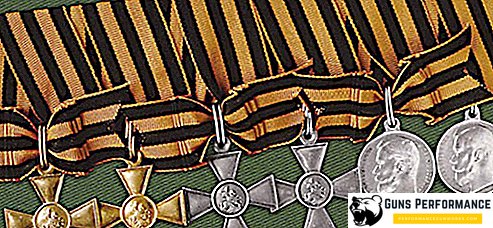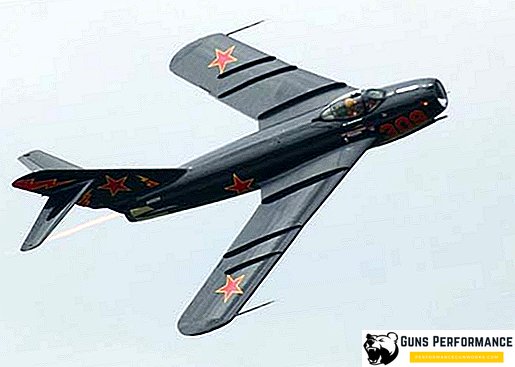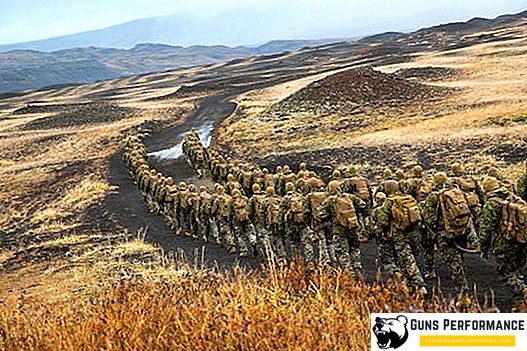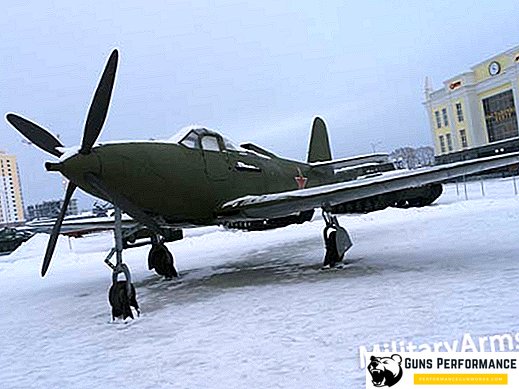
Among all the military awards in Russian history, the Cross of St. George holds a special place. This badge of military valor is the most famous reward of pre-revolutionary Russia. Soldier's Cross of St. George can be called the most massive award of the Russian Empire, because they were marked by the lower ranks (soldiers and non-commissioned officers).
Officially, this award was equal to the Order of St. George, founded by Catherine the Great in the XVIII century. The cross of St. George had four degrees, according to the statute of the award, it was possible to receive this mark of military distinction only for courage on the battlefield.
This insignia existed just over a hundred years: it was established during the Napoleonic wars, shortly before the French invasion of Russia. The last conflict in which the St. George crosses of various degrees were received by several million people was World War I.
The Bolsheviks canceled this award, and the insignia "St. George's Cross" was restored only after the collapse of the USSR. In the Soviet period, the attitude towards the Cross of St. George was ambiguous, although a great number of Georgiev's gentlemen fought on the fronts of the Great Patriotic War — and fought well. Among the Knights of the George Cross, Marshal of Victory Georgy Zhukov, Konstantin Rokossovsky and Rodion Malinovsky. The full cavaliers of St. George were the Soviet Marshal Budyonny, the commanders Tyulenev and Eremenko.
Twice the cross was awarded the legendary partisan commander Sydor Kovpak.
Cavaliers of the Cross of St. George received monetary incentives, they were paid a pension. Naturally, the highest amount paid for the first (highest) degree of reward.

Description of the St George Cross
The insignia of the order was a cross with blades widening towards the end. In the center of the cross was a round medallion, on the obverse side of which was St. George, striking a serpent. On the reverse side of the medallion the letters C and G were put in the form of a monogram.
The cross bars on the front side remained clean, and the number of the award was applied on the reverse. It was necessary to wear a cross on a black and orange St. George ribbon ("colors of smoke and flame").
The Cross of St. George was highly respected in the military: the lower ranks, even when they received an officer’s rank, carried it with pride among the officers' awards.
In 1856, this award badge was divided into four degrees: the first and second were made of gold, the third and fourth - of silver. The degree of the award was indicated on its reverse. The award was awarded consecutively: from the fourth to the first degree.

The St George Cross History
The Order of St. George existed in Russia from the 18th century, but this order should not be confused with the soldier’s Cross of St. George - these are different awards.

In 1807, the Russian emperor Alexander I was presented with a note proposing to establish an award for the lower ranks who distinguished themselves on the battlefield. The emperor found the proposal quite reasonable. On the eve of this, a bloody battle took place near Preussisch-Eylau, where Russian soldiers demonstrated remarkable bravery.
However, there was one problem: it was impossible to award orders to the lower ranks. At that time, they were given only to representatives of the nobility, the order was not just a piece of iron on the chest, but also a symbol of social status, he emphasized the “knightly” position of its owner.
Therefore, Alexander I went to the trick: he ordered the rewarding of the lower ranks not with an order, but with the "insignia of the order." And so a reward appeared, which later became the St. George Cross. According to the emperor's manifesto, only lower ranks could be given the cross of St. George, who showed "unstoppable courage" on the battlefield. The status of the award could be obtained, for example, for the seizure of an enemy banner, for capturing an enemy officer or for skillful actions during the battle. A contusion or injury did not give the right to a reward if it was not related to the feat.

The cross had to be worn on the St. George ribbon, passing it through the buttonhole.
The first cavalier soldier George became a non-commissioned officer Mitrokhin, who distinguished himself in the battle of Friedland in the same year 1807.
Initially, the Cross of St. George did not have degrees and could be issued an unlimited number of times. True, the sign itself was not reissued, but the salary of the serviceman increased by one third. Cavaliers of the Cross of St. George could not be subjected to corporal punishment.
In 1833, the insignia of the Military Order was introduced into the statute of the Order of St. George. Some other innovations also appeared: the commanders of armies and corps could now award them with crosses. This greatly simplified the process and reduced bureaucratic red tape.

In 1844, the Cross of St. George was designed for Muslims, in which St. George was replaced by a double-headed eagle.
In 1856, the Cross of St. George was divided into four degrees. The reverse sign indicated the degree of the award. For each degree existed own numbering.
In the entire history of the Cross of St. George with four degrees more than two thousand people have become his full gentlemen.
Another significant change in the statute of the Badge of Honor of the military order occurred on the eve of the First World War, in 1913. The award received the official name "George Cross", was also established St. George Medal (number medal for bravery). The St. George Medal also had four degrees and was awarded to lower ranks, military personnel of the irregular troops and border guards. This medal (unlike St. George's Cross) could be awarded to civilians, as well as military personnel in peacetime.
According to the new statute of distinction, now the Cross of St. George could serve as a posthumous reward, which was handed over to the hero's relatives. The numbering of the award since 1913 began anew.
In 1914, the First World War began, millions of Russian citizens were drafted into the army. During the three years of the war, more than 1.5 million crosses of St. George of various degrees were awarded.

The first Knight of St. George of this war was the Don Cossack Kozma Kryuchkov, who (according to the official version) in an unequal battle destroyed more than ten German cavalrymen. Kryuchkov was awarded the "George" of the fourth degree. During the war, Kryuchkov became a full George Knight.
During the First World War, the Cross of St. George was repeatedly awarded to women, his cavaliers were foreigners fighting in the Russian army.

The appearance of the award also changed: in heavy wartime, the highest degrees of the cross (the first and the second) began to be made of low-grade gold, and the third and fourth degrees of the award lost much weight.
The Statute of 1913 significantly expanded the list of acts for which they complained of the Cross of St. George. This largely offset the value of this distinction. During the First World War, more than 1.2 million people became Cavaliers of Yegoria. Judging by the number of recipients, in the Russian army there was just mass heroism. Then it is not clear why these millions of heroes soon shamefully fled to their homes.
According to the statute, the cross should have been issued only for feats on the battlefield, but this principle was not always maintained. Georgy Zhukov received one of his St. George crosses for a concussion. Apparently, the future Soviet marshal already in those years was able to find a common language with his superiors.
After the February Revolution, the status of the Cross of St. George was changed again, and now officers could be rewarded with them after the appropriate decision of the soldiers' meetings. In addition, this battle insignia began to complain for purely political reasons. For example, Timofey Kirpichnikov was awarded the cross, who killed the officer and led a rebellion in his regiment. Cavalier of two degrees of the cross at once was Prime Minister Kerensky, for having "torn off the banner of tsarism" in Russia.
Cases are known when the St. George Cross was awarded whole military units or warships. Among others, this sign was granted to the crews of the cruiser "Varyag" and the gunner "Koreyets".
During the Civil War in the units of the White Army, soldiers and non-commissioned officers continued to award St. George's crosses. True, the attitude to the awards among the White movement was ambiguous: many considered it shameful to receive awards for participating in a fratricidal war.
On the territory of the army of Donskoy, George the Victorious on the cross turned into a Cossack: he was wearing a Cossack uniform, a hat with a hood, from which a chub was sticking out.
The Bolsheviks canceled all awards of the Russian Empire, including the Cross of St. George. However, after the start of the Great Patriotic War, the attitude towards the award changed. "George" was not allowed, as many historians say, but the authorities looked "through the fingers" at wearing this sign.
Among Soviet awards, the ideology similar to the soldier George had the Order of Glory.
The St. George crosses were awarded to collaborators who served in the Russian Corps. The last award took place in 1941.
The most famous george holders

During the entire existence of this award, about 3.5 million crosses of St. George of various degrees have been issued. Among the holders of this badge of distinction are many famous personalities who can be safely called historical.
Shortly after the appearance of the award, she received her famous "cavalry girl" Durov, the cross was granted to her for saving the life of an officer.
Former Decembrists Muravyov-Apostol and Yakushkin were awarded with St. George's crosses - they fought with Borodino in the rank of ensigns.
General Miloradovich also received this soldier's award for his personal participation in the battle of Leipzig. The cross was handed to him personally by the emperor Alexander, who witnessed this episode.
A very famous character for his era was Kozma Kryuchkov - the first cavalier of "George" of the First World War.
The famous division commander of the Civil War, Vasily Chapaev, was awarded with three crosses and the St. George Medal.
Cavalier of the St. George Cross was Maria Bochkareva - the commander of the women's "death battalion", created in 1917.

Despite the huge number of crosses issued for the entire period of existence of this award, today this insignia is a rarity. It is especially hard to buy the St. George Cross of the first and second degree. Where did they go?
After the February Revolution, the Provisional Government threw the cry to surrender their awards to the "needs of the revolution." So George Zhukov lost his crosses. Many awards were sold or melted during periods of famine (there were several during the Soviet period). Then a cross made of silver or gold could be exchanged for several kilograms of flour or even a couple of loaves of bread.












